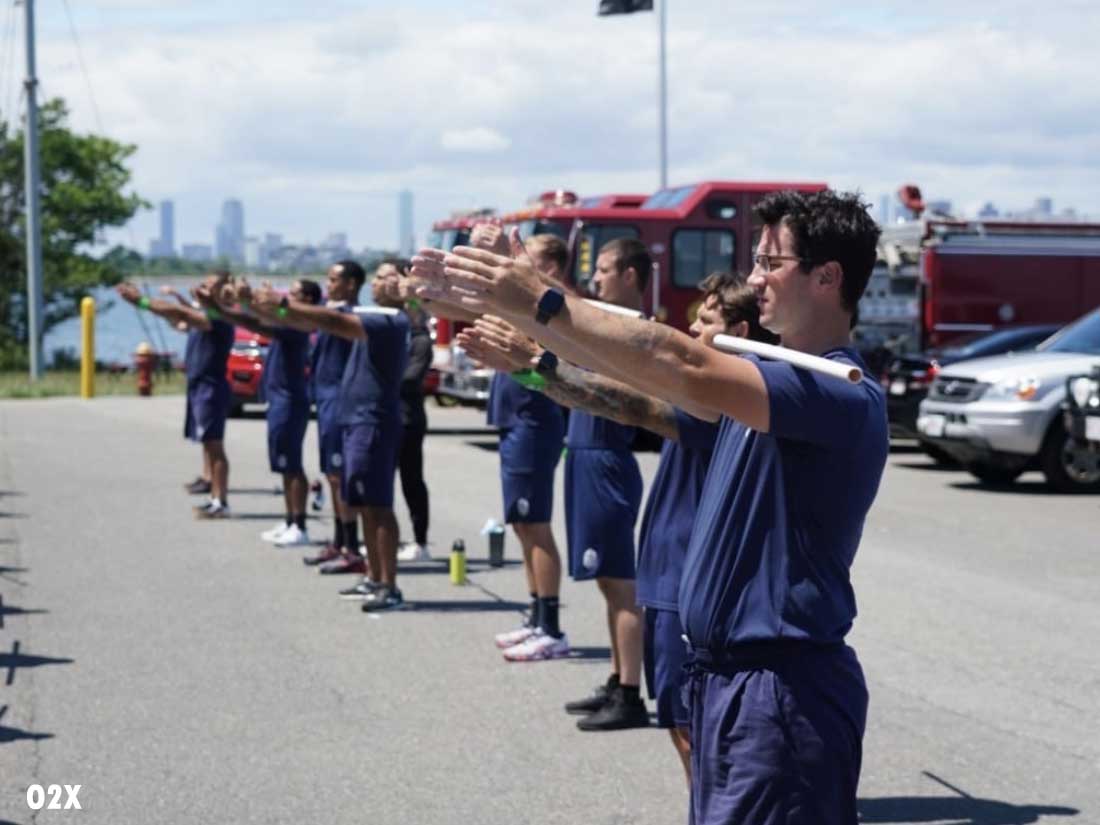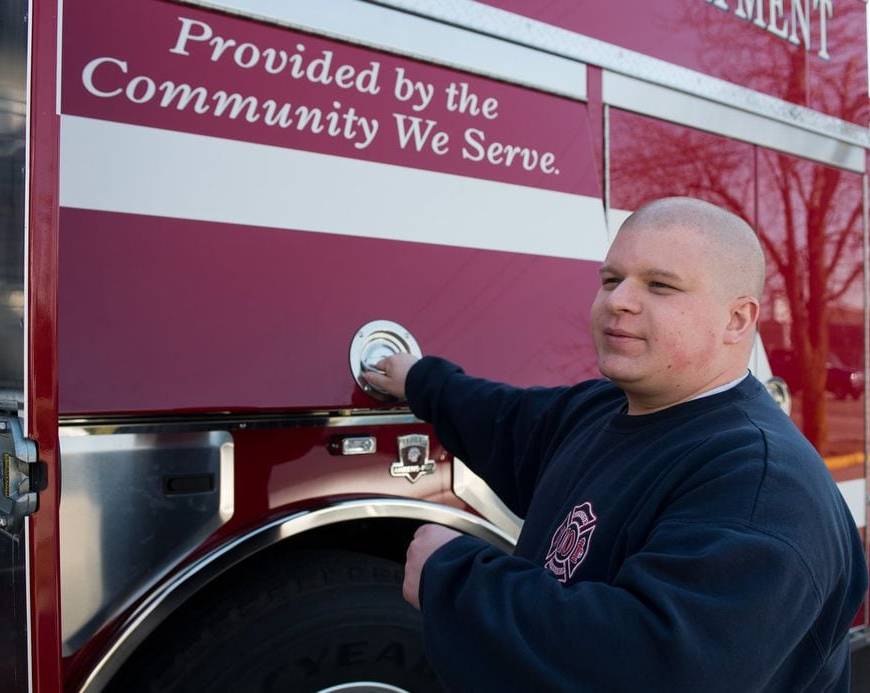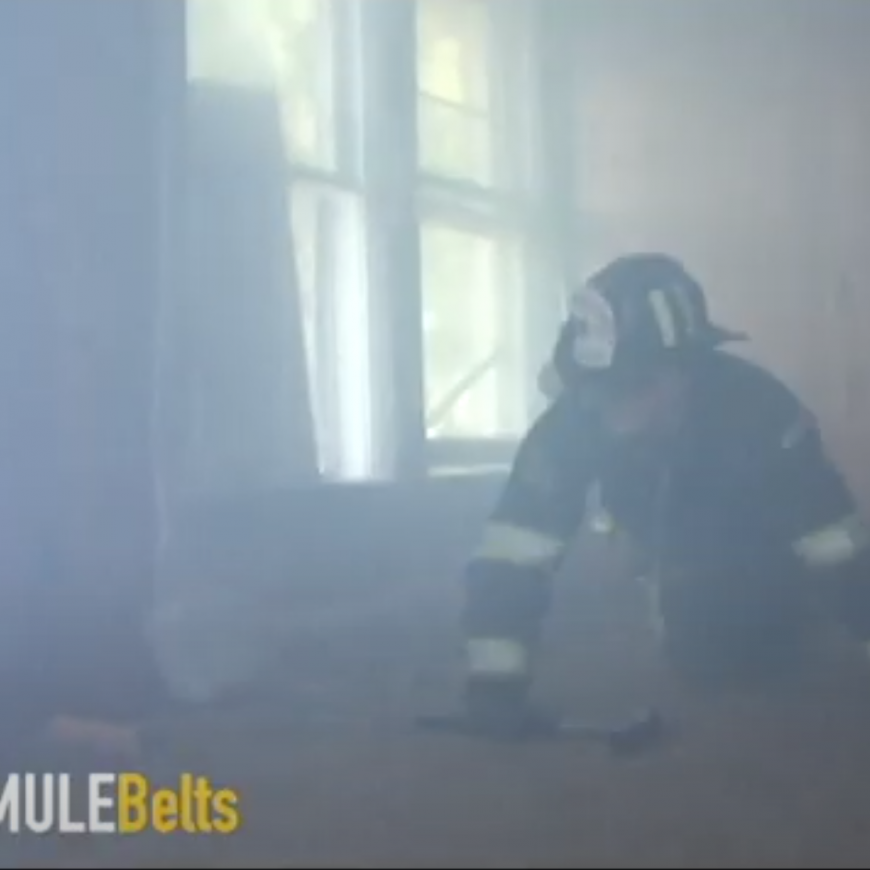By Conner Freeland
Successfully graduating from a fire academy is one of the most rewarding but challenging times in a person’s life. Although it’s difficult to truly be ready for the rigors of a fire academy, preparing as best you can will surely help. Being a human performance specialist for O2X has allowed me the opportunity to coach and mentor 10 recruit classes through the process of becoming probationary firefighters within the Washington D.C. Fire & EMS Department. Through their successes and failures, I’ve put together the six most mission-critical points to focus on before starting the process…
- Introduction to the Fire Academy
- Introduction to the Fire Academy: PPE, SCBA, and Ladders
- Introduction to the Fire Academy: Confined Space, Vehicle Extrication, and Live Burns
- Introduction to the Fire Academy: Hoselines, Water Supply, and Academy Graduation
Foundational Strength
Entering the academy with a foundation of strength is critical, and while being the strongest in the room isn’t necessary (although great for a first impression), having some experience with resistance training will be beneficial. More than half of the recruit classes we encounter join the academy with experience in resistance training. From high school or college athletes to fitness hobbyists, most raise their hand when we ask who knows their way around a weight room. That said, only a small fraction of those understand proper biomechanics and exercise form. When it comes down to throwing ladders, pulling ceiling, carrying victims, and forcing doors, among other tasks…possessing strength is important, but being strong at end ranges of motion, through all planes of movement, is most important. Performing exercises with proper form can also help mitigate injury that may occur due to improper movements or loading of the muscles and joints. Find ways to incorporate a push, pull, squat, hinge, lunge, and carry in every facet of your training program, practice proper mechanics, and progressively add more load. If you learn to move well and sustain movement patterns first, it will pay dividends in the long run.
Variety in Cardiovascular Endurance
Cardiovascular endurance is another crucial aspect of preparation for a fire academy. It plays a vital role in ensuring that aspiring firefighters have the stamina and energy to perform their duties effectively and safely. Cardio is typically the first point people mention when preparing for the physical strain of an academy, but far too often, potential recruits burn out from too intense of a training program early on and start the academy with one foot in the grave. Starting off, less is more. Set small goals for yourself along the way and increase intensity, duration, or distance each week. Add in variety, and don’t get stuck just pounding the pavement through running. Your body will thank you. Completing high-intensity interval training (HIIT) or even low-intensity interval training (LIIT) is a great way to incorporate other forms of exercise during training. These intervals help to improve how efficiently the body uses oxygen, enabling it to work longer and more strenuously. Circuits, cycling, and swimming are all great changes to the traditional running programs for cardio. Whatever you choose to do, ensure you have proper footwear for extended time exercising on your feet. Those worn-out lawn-mowing shoes won’t cut it.
Mobility
Mobility is one of the most underrated components of training for the job. Working your joints through their normal ranges of motion seems like a menial task to incorporate but often is overlooked. If a firefighter has poor range of motion, it can inhibit their movement and create unnecessary compensation in other areas of the body. The body is an extraordinary machine and will contort itself in a variety of ways to do the thing it’s asked to do. For example, If an individual lacks the proper shoulder mobility required to optimally press overhead, the body will work harder to accomplish this task by potentially creating anterior pelvic tilt or aggressive rib cage flare, both of which can lead to instability, compromised positions, and a lack of strength. Once proper mobility is obtained, the next step is to control and load that newfound range. Stability equals strength, and when lives are on the line, you’re going to need as much strength as possible. Pick three or four mobility exercises each for the shoulders, hips, and ankles and pair them with the physical demand of the training day. These can be phenomenal tools added into your dynamic warm-up, or created separately for recovery days.
Routine
Creating a solid routine prior to starting your academy will give you an edge that many others may not have. Our bodies like structure and life in the academy will take a toll on this structure. From waking up early (after what feels like JUST falling asleep), studying late, to somehow blending your old life with the new…all of these require prep work. Establishing a pattern of behavior can allow you a better sense of stability and can help reduce stress and anxiety. It will also aid in time management skills, which is one of the top intangible skills you’ll need to be successful. However, the most important one to lock down is a sleep routine.
Sleep
Sleepis the cheat code for health, well-being, and especially recovery. You will be tested cognitively and physically during your time at the academy, so allowing your body to undergo its natural restorative process will aid you in performing at a high level. Creating a consistent sleep routine includes identifying bedtime and wake time. In doing this, we train our bodies to follow a natural sleep cycle, which can result in deeper, more restful sleep. Moreover, developing a presleep routine and avoiding screen time one to two hours prior to sleep is crucial. Healthier options to wind down could include reading, journaling, meditating, and deep breathing. These are all great tools to help de-stress, resulting in better sleep and ultimately, more recovery.
Proper Fueling
As a tactical athlete, you need to fuel like one. Whether in the classroom or on the fireground, your brain, muscles, tissues, and organs work significantly better when you’re properly fed and well hydrated. Providing your body with nutrient-dense foods that include vitamins, minerals, and fiber is imperative in sustaining this energy throughout the day. Too often, ill prepared recruits rely on unprocessed snacks and energy drinks for fuel due to scrambling in the morning. Remember those time management skills we talked about? This would be an opportune time to use them and prioritize meal prep during the weekend. Recruits need all three macronutrients consisting of carbohydrates, proteins, and fats in their diet. Carbs are the most efficient source of fuel for energy and should account for 40-60% of your total caloric intake. Eating fruits, vegetables, and grains such as sweet potatoes, brown rice, beans, oats, bananas, and apples are all phenomenal sources of carbohydrates. Secondly, lean proteins are essential for muscle development and tissue recovery but also aid in immune function. Aim for 25-35% of your day to include lean proteins such as chicken, turkey, salmon, or tuna. Lastly, ensure that you incorporate healthy fats into your diet, mainly from unsaturated sources like nuts, fish, and oils. No more than 20-30% of your calories should come from fats. Without this pivotal macronutrient, brain function and hormone regulation can drastically decrease.
While there’s no exact routine or plan to follow to fully prepare for a fire academy, I believe these six points will surely help in your preparation. The hardest component of any training program or habit is the consistency with which you perform it. Remember to set realistic goals, prioritize your physical and mental health through it all, and continue getting 1% better every day.
Conner Freeland is an O2X program manager embedded at Washington D.C. Fire & EMS. As a program manager, Conner leads and manages a diverse team of O2X on-site specialists in delivering human performance training and education through the O2X Integrated Specialist Program (ISP). These experts design and implement training programs that prepare D.C. firefighters for the rigors of their professions. The ISP incorporates elements of conditioning, injury prevention, nutrition, fatigue management and sleep science, stress mitigation, sports psychology, and resilience.
O2X Human Performance provides comprehensive, science-backed programs to hundreds of public safety departments, federal agencies, and the military. O2X works with clients to elevate culture, improve mental and physical wellbeing, support healthy lifestyles, and reduce healthcare costs associated with injuries and illnesses. Driven by results and cutting edge research, O2X programs are designed and delivered by a team of Special Operations veterans, high level athletes, and hundreds of leading experts in their respective fields of human performance.
Read More: https://www.fireengineering.com/health-safety/six-tips-to-prepare-yourself-for-the-fire-academy/
Contact Pacmule Belts at 630-868-3877 or click here



